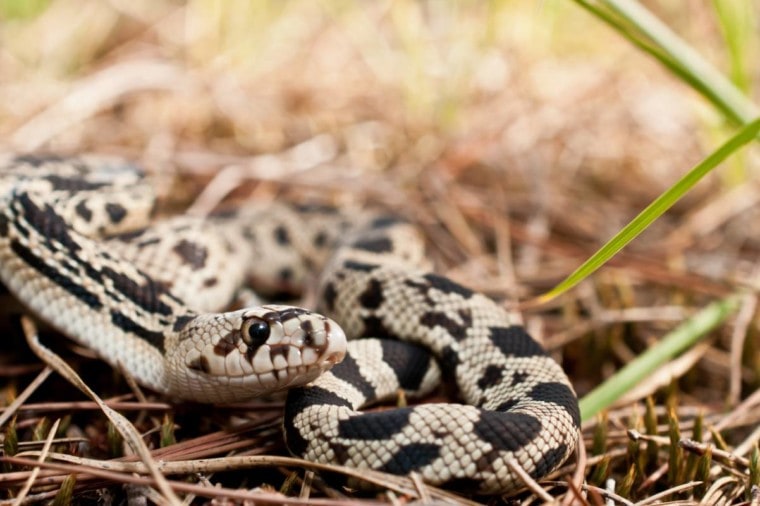
Reptiles can be intimidating pets with their need for light, shade, proper temperatures and humidity, and spacious tanks. Some species of lizards and snakes require constant monitoring or expensive setups just to keep them from dying! But despite these difficulties, not all reptiles are tricky to care for. If you are just getting interested in keeping reptiles, any of these species would be a good place to start.
The 19 Best Pet Lizards and Snakes for Beginners
1. African Fat-Tailed Gecko
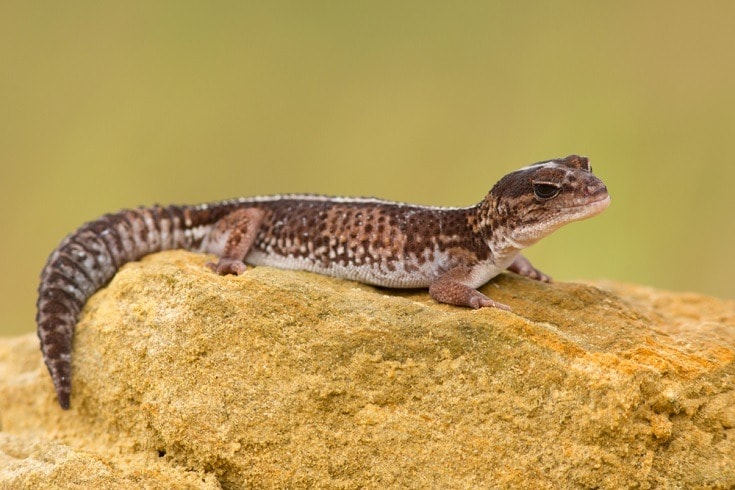
| Lifespan: | 10–25 years |
| Habitat Needs: | Needs: 10-gallon tank, 80–95°F |
| Care Level: | Easy |
| Diet: | Insects |
This friendly gecko is native to Western Africa and is known for its wonderful temperament. They thrive in captivity and are much more open to being handled than many species of gecko. They have a distinctive appearance, with tails nearly as thick as their bodies, and grow to be around 9 inches long. These geckos have become more common in recent years and make a great choice for many beginners.
2. African Fire Skink

| Lifespan: | 15–20 years |
| Habitat Needs: | 20-gallon tank, 65–84°F |
| Care Level: | Easy |
| Diet: | Crickets, mealworms |
With its gorgeous red and black scales and its beautiful coloration, the African fire skink is an impressive pet. They usually reach around 15 inches long and live in a 20-gallon tank or larger. These skinks are fairly low maintenance and are more active than many lizard species, making them interesting to watch as they explore their tank. They don’t enjoy being handled much, so these are best left inside their tank.
3. Australian Water Dragon
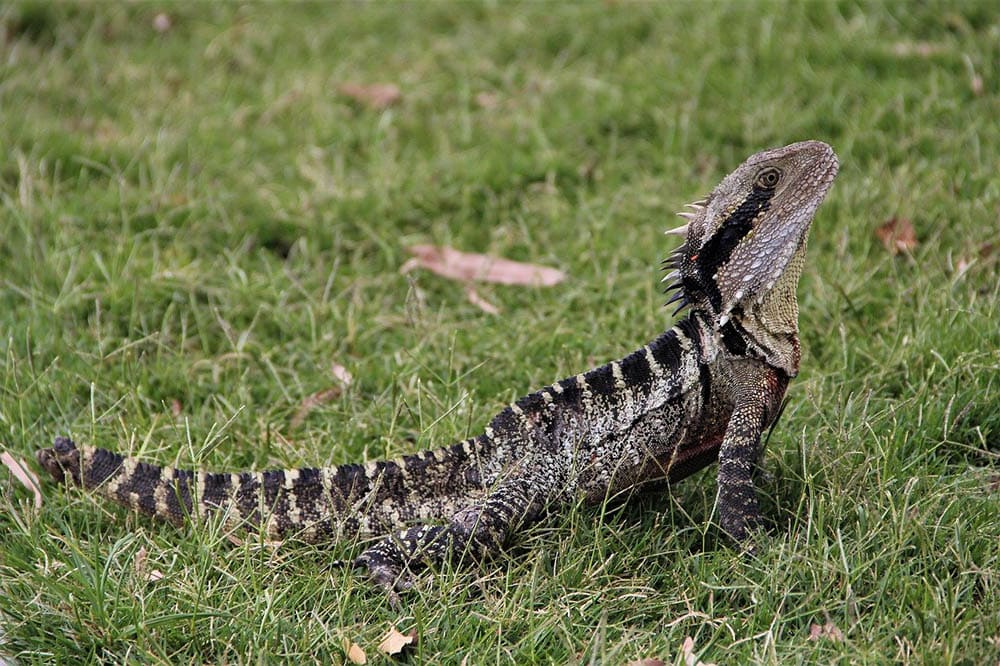
| Lifespan: | 10–15 years |
| Habitat Needs: | 150-gallon tank, 60–70% humidity, 80–105°F |
| Care Level: | Moderate |
| Diet: | Insects and vegetables |
One of the larger lizards on this list, Australian water dragons can reach up to three feet in length and require a lot of room to be happy. It requires a fair amount of attention to temperature and humidity as well as a larger space, but once you get a good setup it is fairly easy to care for. Australian water dragons are usually friendly, hardy and enjoy being handled, making them a rewarding pet for beginners and an impressive pet to have in your home.
4. Ball Python
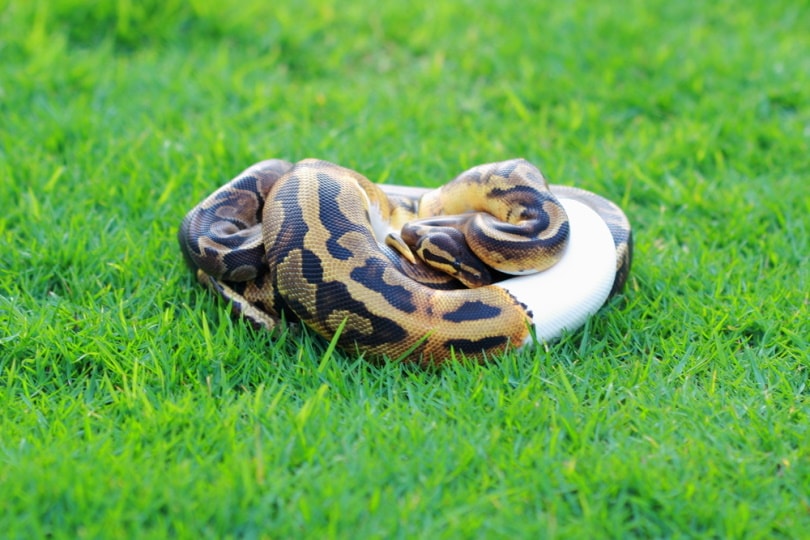
| Lifespan: | 15–30 years |
| Habitat Needs: | 30-gallon tank, 55–60% humidity, 80–90°F |
| Care Level: | Beginner |
| Diet: | Mice and rats |
Ball pythons are the most popular snake out there. These snakes are fairly small and known for curling up into a tight ball, hence the name. They are usually relaxed and friendly, making them a perfect choice for owners who love to handle their reptiles. Ball pythons will eat fresh or frozen mice and other rodents and grow to be about 2–4 feet long. They come in hundreds of beautiful color options, so you can take the time to find the perfect morph.
5. Bearded Dragon
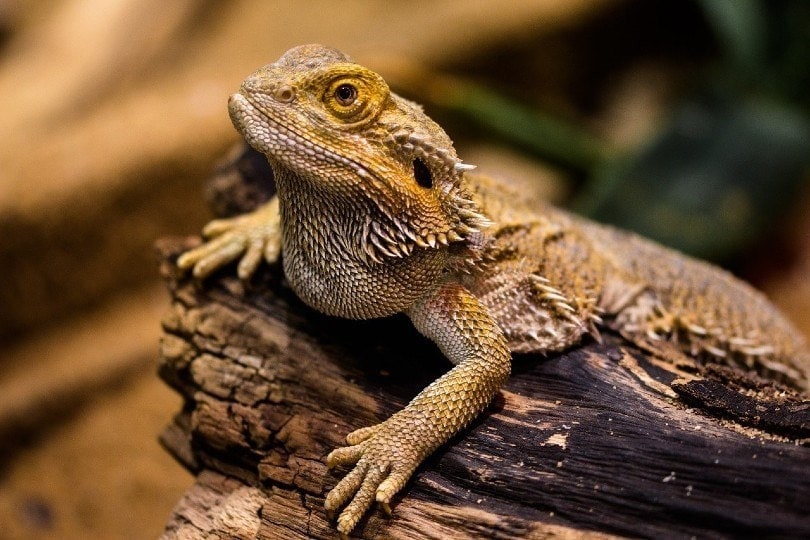
| Lifespan: | 10–15 years |
| Habitat Needs: | 40-gallon tank, 75–100°F |
| Care Level: | Easy |
| Diet: | Omnivore |
Bearded dragons are one of the most popular lizards in the US, and it’s easy to see why. They are easy to care for, outgoing, and social. Bearded dragons often enjoy time spent out of their enclosure and can even be taught to walk on a leash. They are medium-sized lizards that grow to be around two feet long, so they need a fairly large tank to give them space to grow and move.
6. Blue Tongued Skink
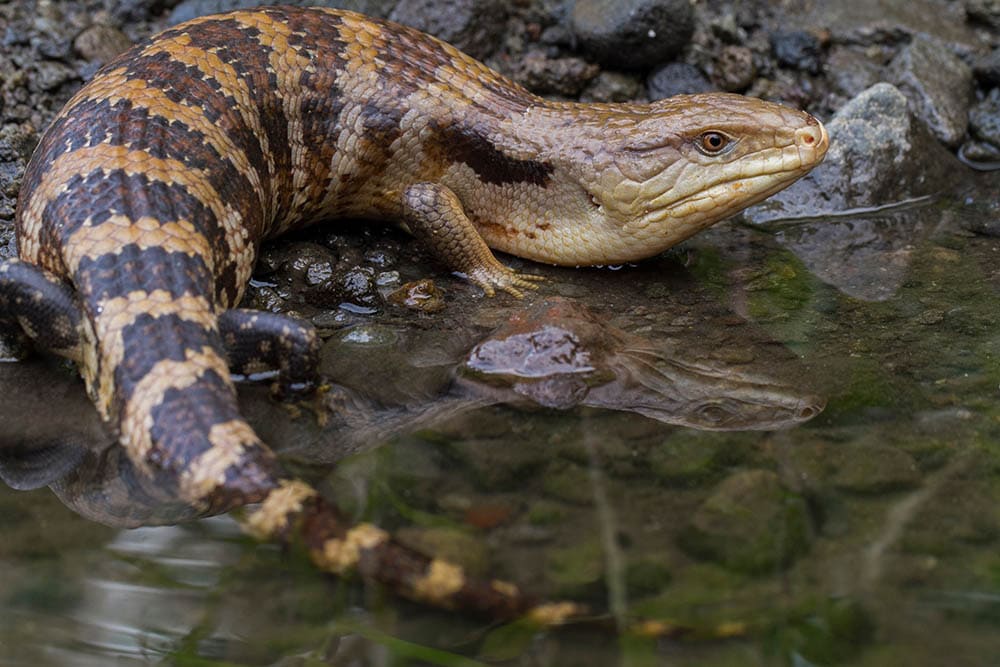
| Lifespan: | 15–18 years |
| Habitat Needs: | 30-gallon tank, 20–40% humidity, 70–80°F |
| Care Level: | Easy to moderate |
| Diet: | Omnivore |
Blue tongued skinks are notable for their bright blue tongue, but that’s not the only reason to have them around. They are very docile lizards and spend a lot of time basking, making them a relatively low-maintenance pet. They can weigh up to 4 pounds, making them fairly hefty for lizards, but they stay around 18–20 inches long. They eat a wide variety of plants and insect food.
7. California Kingsnake

| Lifespan: | 20+ years |
| Habitat Needs: | 20-gallon tank, 70–85°F |
| Care Level: | Easy |
| Diet: | Mice |
California kingsnakes are native to the West Coast of the United States and are one of the most common pet snakes out there. They have minimal care requirements—they don’t need much space to move around, and they can be happy at room temperatures or just above. They are also not picky eaters—in captivity, feeder mice are ideal, but in the wild they eat birds, mice, rats, and even other snakes. Kingsnakes do have a tendency to nip at handlers if they don’t receive enough habituation. If your kingsnake is nippy, make sure to give him daily handling except for shortly after feeding.
8. Corn Snake
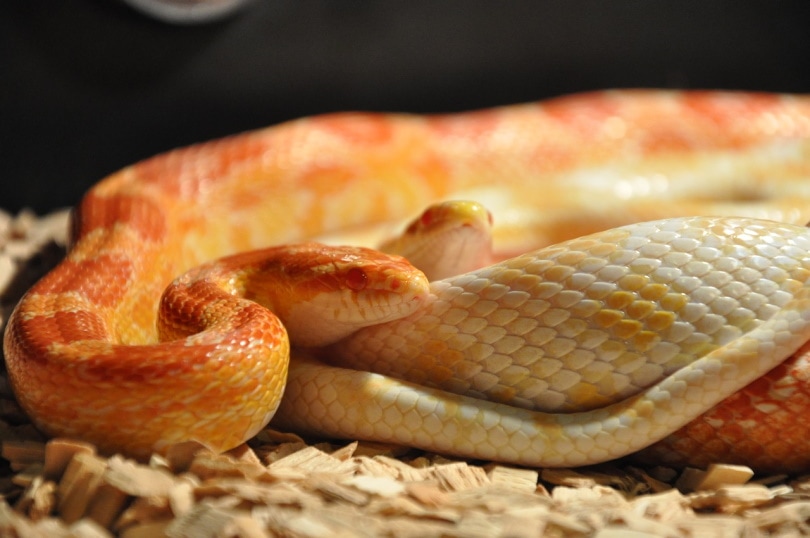
| Lifespan: | 15–20 years |
| Habitat Needs: | 30-gallon tank, 75–85°F |
| Care Level: | Easy |
| Diet: | Mice |
Corn snakes are everything a beginner snake keeper could ask for. Their enclosures are easy to set up, with only minimal heating needed, and they are tolerant of a wide range of humidities. They are usually docile and fairly easy eaters, and they come in hundreds of morphs ranging from reds and yellows to pinks, grays, and whites. Like many snakes, they have long lifespans and can live up to 20 years in captivity, with some lasting even longer.
9. Crested Gecko
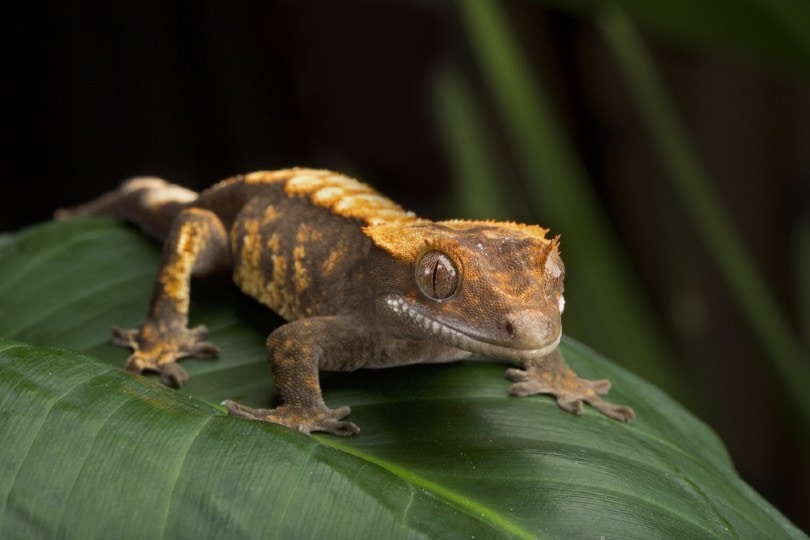
| Lifespan: | 10–20 years |
| Habitat Needs: | 20-gallon tank, 60–80% humidity, 70–80°F |
| Care Level: | Easy to moderate |
| Diet: | Omnivore |
Up until the 1990s, crested geckos were thought to be extinct. When they were rediscovered on a remote island, breeders brought a few into the US and now they’re one of the most common gecko species. Talk about a comeback! Cresties are easily recognized by their spiny backs and “eyelashes” that make them stand out. They need a tall enclosure for climbing and are generally happy and easy to care for—if you don’t mind regularly misting their tank to keep it humid.
10. Gargoyle Gecko
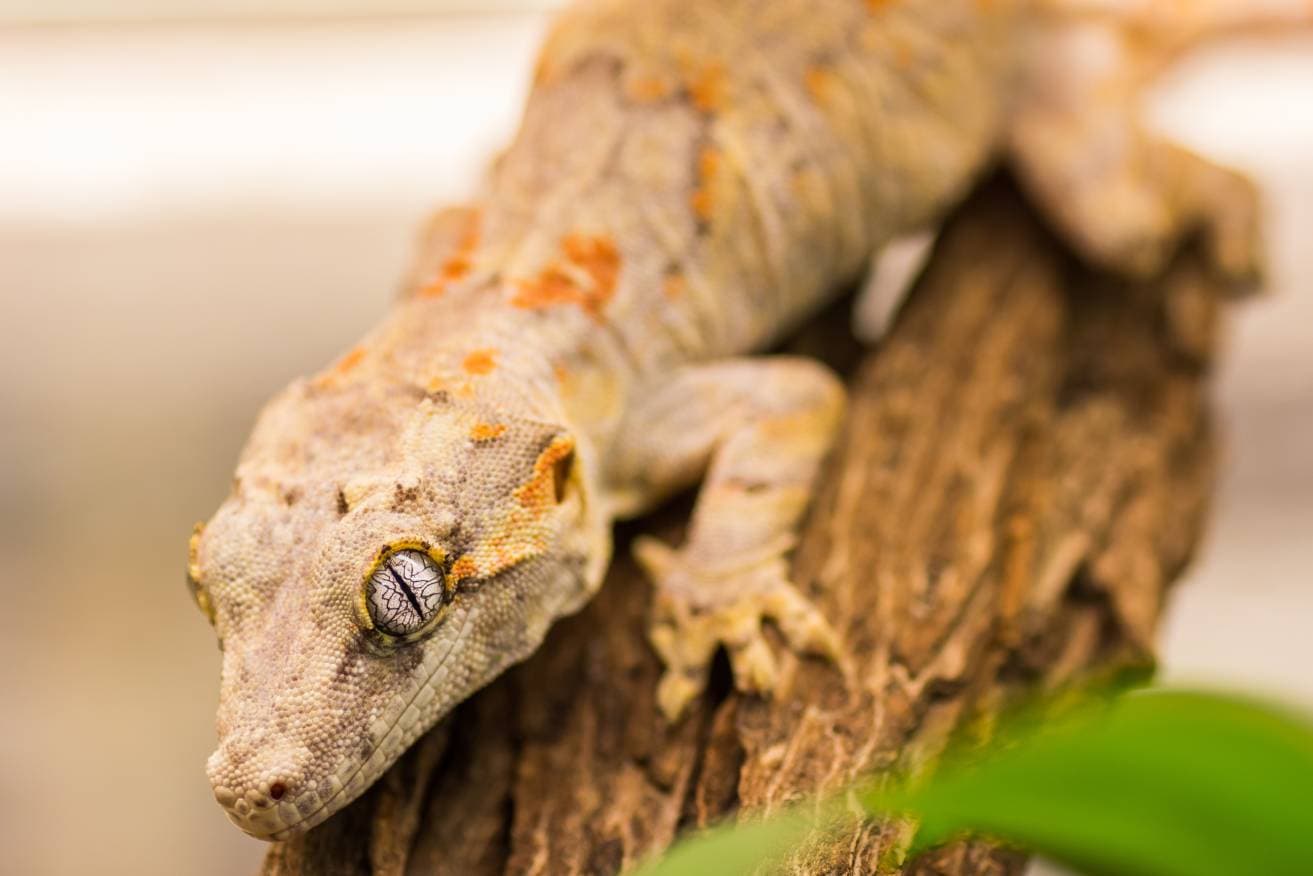
| Lifespan: | 20 years |
| Habitat Needs: | 20-gallon tank, 75–82°F |
| Care Level: | Easy |
| Diet: | Insects and fruit |
Gargoyle geckos have beautiful, mottled skin that can blend right into their environment, making them a treat to hunt for in their cages. They have fairly simple with easy care requirements, making them great for beginners. Gargoyle geckos need regular handling to stay tame, and poorly cared-for geckos may get nippy, but they generally are not big enough to cause any real damage. These beautiful geckos are a great choice for a new pet owner.
11. Gidgee Skink

| Lifespan: | 20+ years |
| Habitat Needs: | 20-gallon tank, 75–82°F |
| Care Level: | Moderate |
| Diet: | Omnivore |
Gidgee skinks are fairly large lizards with beautiful, roughly scaled skin. These lizards are generally easy to care for and love hot weather—the ambient air in their tank should be at least 70–90 degrees, while hot basking surfaces can be up to 120 degrees! These are bigger lizards that do best in pairs, so a large enclosure is a must.
12. Green Anole

| Lifespan: | 4–6 years |
| Habitat Needs: | 10-gallon tank, 60–70% humidity, 75–85°F |
| Care Level: | Easy |
| Diet: | Insects |
Green anole lizards are small, brightly colored lizards that have a bright red dewlap on their neck. When it puffs up, it’s really a sight to see! These lizards are slightly skittish and require some time to get accustomed to handling. They don’t require much space because of their small size and are happy in a 10-gallon tank, making them perfect for a desktop friend. They grow to about eight inches long and have a slender body that lets them move quickly when they want to.
13. Green Snake

| Lifespan: | 10–15 years |
| Habitat Needs: | 30-gallon tank, 70–80°F |
| Care Level: | Easy |
| Diet: | Insects |
Green snakes are a beautiful and brightly colored snake species that are also fairly easy to care for. Unlike many snakes, they don’t require mice or other warm-blooded food—instead, they live off insects and earthworms, making them a perfect choice for you if dealing with mice isn’t your cup of tea.
Another unusual feature of green snakes is that they often get along well in groups. Whether you own one or many, your green snake should be kept in a densely vegetated tank with plenty of plant cover and climbing space. One drawback of green snakes is that they don’t love being touched. If you want a snake that will enjoy regular handling, another species might be better.
14. Leopard Gecko

| Lifespan: | 10–20 years |
| Habitat Needs: | 10-gallon tank, 75–95°F |
| Care Level: | Easy to moderate |
| Diet: | Insects |
Leopard geckos are one of the most popular pets out there—and it’s not hard to see why. They have beautifully spotted bodies and are easy-going in terms of care and temperament. They grow to their maximum size quickly and are happy in a warm tank with lots of cover. Unlike many reptiles, leopard geckos are known to be very vocal, especially when hungry. They are docile and become accustomed to handling, and they rarely bite.
15. Long-Tailed Lizard

| Lifespan: | 5–10 years |
| Habitat Needs: | 20-gallon tank, 70–75% humidity, 75–85°F |
| Care Level: | Easy to moderate |
| Diet: | Insects |
Also known as grass lizards, these little lizards have tails that are three to four times as long as the rest of them! They love to climb through branches, using their tail as an extra limb. Even though they are quite small, they need a fair amount of space to climb and move, so a 20-gallon tank or larger is preferred. They also do well with lots of greenery and tree cover.
16. Mourning Gecko

| Lifespan: | 8–12 years |
| Habitat Needs: | 30-gallon tank, 60–70% humidity, 75–85°F |
| Care Level: | Easy to moderate |
| Diet: | Omnivorous |
Do you love the idea of a whole colony of reptiles? Mourning geckos are a great starter lizard that does best in groups of at least two to three. These tiny geckos are native to Hawaii, so they love warm, humid temperatures with slightly cooler nights. These geckos are unique because they are all female and reproduce asexually. This means you need to be prepared for hatchlings to appear, even if you only have one gecko. But if you think the tiny adults are cute, finding your first hatchling will really melt your heart!
17. Ringneck Snake
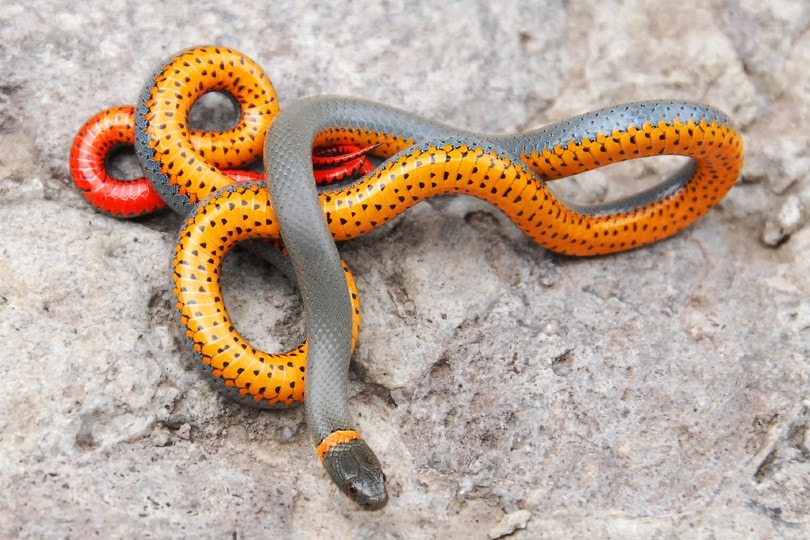
| Lifespan: | 6–10 years |
| Habitat Needs: | 10-gallon tank, 70–75°F |
| Care Level: | Easy |
| Diet: | insects, earthworms |
Ringneck snakes are all business in the front, party in the back. The top of their bodies is a drab gray, brown, or black, making it easy to hide in bushes and leaf litter, but their bellies display a vibrant splash of red, yellow, or orange. These tiny snakes are often under a foot long, so they need only a small amount of space. Ringneck snakes are another insectivorous choice and often live almost entirely off earthworms, which makes them easy to feed for more squeamish owners.
18. Rosy Boa

| Lifespan: | 30+ years |
| Habitat Needs: | 10–30 gallons, 75–85°F |
| Care Level: | Beginner |
| Diet: | Mice and rats |
Rosy boas are shy but docile snakes that make great beginner pets. They are known for being especially long-lived, with some snakes living for over fifty years in captivity. They tend to enjoy small spaces and like lots of hiding places in their enclosure.
Rosy boas are known as little Houdinis of the reptile kingdom. They love to slither through the smallest gaps, so you should make sure your cage lid is tightly latched and that there are no gaps or weak points where your boa might escape.
19. Rubber Boa
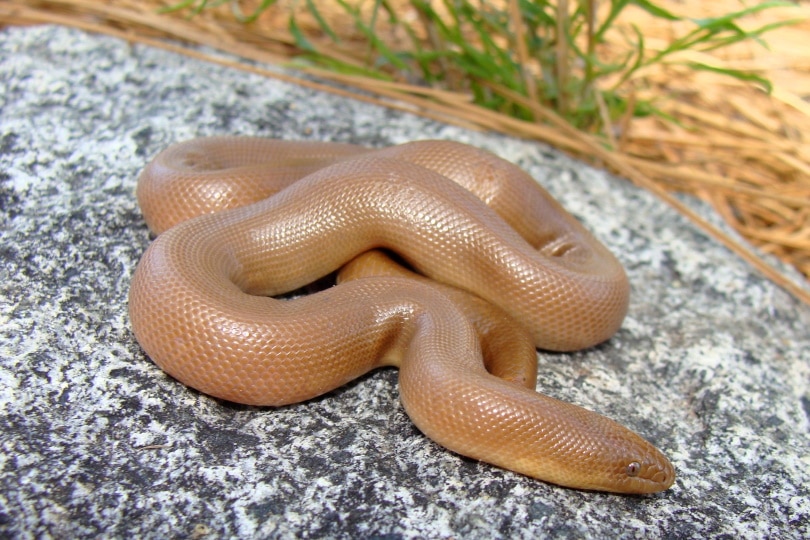
| Lifespan: | 20+ years |
| Habitat Needs: | 15–25 gallons, 70–85°F (55–65°F winter) |
| Care Level: | Beginner |
| Diet: | Mice |
If heat lights and misters are a little out of your comfort zone, the rubber boa is a perfect choice. These snakes are native to North America and can withstand a range of temperatures and humidities that are probably pretty close to your home’s temperature. If your home is at least 70°F for most of the year, an enclosure that’s out of direct sunlight will be perfect for this snake. Rubber boas are also docile and easy to handle. They are not very active snakes except when hunting and enjoy having lots of space for burrowing and hiding. The only difficulty in rubber boa care is that they brumate or hibernate in cold temperatures. This requires some seasonal changes to their enclosure to prepare for brumation.
Final Thoughts
While cats and dogs make great pets, some people are looking for a more exotic companion. We hope that this list of fantastic reptiles helps you find the perfect pet. Reptiles may not be for everyone, but as you have just read, reptiles have so many different traits that can turn you into a reptile-owner for life!
Featured Image Credit: Jay Ondreicka, Shutterstock








